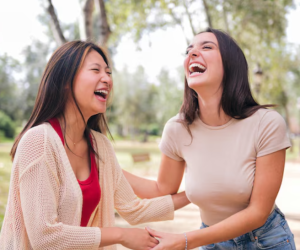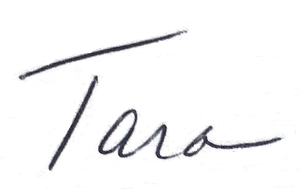I was ambling through downtown Chattanooga, enjoying the warm spring evening. With a full belly, nowhere to be, and Mike’s hand in mine, a sense of gratitude swept through me. I noticed a couple, about our age, strolling near us. The woman walked with a carefree spring in her step. She was a bit ahead of her partner when she began to make a gesture: She wriggled her fingers, reached back, and waited for him to take her hands. He was gazing up at the Chattanooga Choo Choo, rather than down at her caboose, where her hands waited for his.
I wasn’t going to leave a sister feeling rejected.
So I let go of Mike’s warm grasp, and with a few quickened steps I took the hand of the stranger. Without looking back, she squeezed my hand with a silent “you’re my person” grip. So I gave a little double-squeeze back and continued to walk with my hand in hers. Our two guys both followed along, grinning with anticipation. This happy lady and I walked hand in hand for only a few seconds longer when she realized something felt less than familiar. So she slowed her stroll and turned around.

Her mouth dropped open, her eyes widened to the rim of her glasses and then she doubled over in laughter. Contagious adrenaline and endorphins had the four of us laughing like stoners watching Seinfeld. When the woman was finally able to speak, in a very British accent, she belted, “How gorgeous. That was absolutely gorgeous. Oh thank you! I don’t think I will ever forget you!”
Not the food, not the mountain views, not even the Chattanooga Choo Choo, but that simple playful gesture will forever spring forth as the crowning memory of our weekend in that bustling Tennessee town. Seeing that woman’s face light up and unleash into shared laughter left us with an energy that pulsed for hours. It was for sure a Talk to the Brain™ cocktail moment.
- The anticipation produced dopamine and norepinephrine
- The woman’s gratitude produced serotonin
- The laughter produced endorphins
- The unspoken connection produced oxytocin
- The joy produced anandamide
According to Psychology Today, the average 4-year-old laughs 300 times a day. And how about a 40-year-old? They average a measly four chuckles per day. Yet laughter has the power to heal. All of those feel-good molecules in this Talk to the Brain™ cocktail moment have the power to elevate our energy, decrease our dopamine craving, and wait for it………...reduce the stress hormone cortisol. And when we make other people laugh, the effects are multiplied!
Today’s Talk to the Brain™ Tip:
Laugh More
But how? How do we increase our laughter quotient? One simple strategy is to strive to make mundane moments fun consistently. Get creative and investigative.
The moment at the Chattanooga Choo Choo didn’t happen by accident. It came from the intentional practice of two Talk to the Brain™ Tips.
You can now listen to the Talk to the Brain™ Tips! Here are the two I combined for a memory of rip-roaring laughter:
It’s Better When We Hold Hands
and
Don’t Act Your Age
I know, not everyone wants to read stories. Do you prefer to pop in your earbuds and listen? You can SUBSCRIBE to my YouTube channel and I will read you a story to make you think, act, and laugh!



Recent Comments